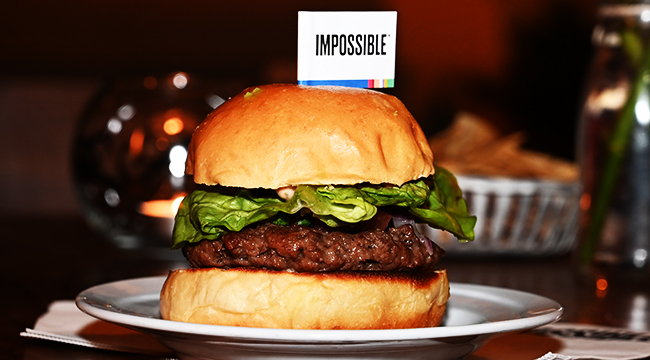
The first time I ever ate a veggie burger, I was 12 or 13, and I had declared I was going vegetarian, in part because I was raging against the machine of meat and in part because I had just read Frankenstein for the first time and when I found out that Mary Shelley had been a vegetarian, I was determined to follow suit. That same night, my family fired up the grill and made juicy burgers and fat bratwurst, practically bursting out of its casing with nutmeg and fennel and garlic. I sat in front of a Boca burger, decidedly not grilled — because the first one had crumbled and fallen into the flames. It sagged and crumbled as I picked it up, seated in a sesame seed bun, and when I took the first bite, I tasted, well, a salted wheat patty with the texture of a wet sponge.
Needless to say, my foray into vegetarianism lasted all of two days, but times have changed. Meat alternatives taste better than ever, and the future is looking increasingly likely to have meatless options that sacrifice no flavor. Especially if the powers that be at vegan meat company Impossible Foods are to be believed.
According to Grist, Impossible Foods conducted several surveys, all of which show “that young people are more likely than past generations to seek out meat alternatives.” But this isn’t just a passing fad according to founder and CEO Pat Brown: the Impossible Burger is slated to be cheaper than meat in roughly three years, meaning the future will very likely be meatless.
At a recent event, Brown told a crowd of kids, “I promise that by the time you are adults the meat you eat will not come from dead animals. You can come find me and beat me up if I’m wrong.”
How can Brown be so sure?
Plant-based meats “require less land and resources than ground chuck” and “Impossible Burgers should be cheaper as soon as the company is big enough to capture the efficiencies of mass production.” In other words: producing meat alternatives to scale will use fewer resources overall, making the end-product cheaper than, say, mass-produced beef, which uses huge amounts of water and land. Combine that with the cost-efficiency of mass production, and you’ll have a dirt-cheap meat-alternative widely available in almost no time. Brown believes that they’ll be able to scale to mass production by 2022, based on their current growth.
This is welcome news to people looking to lower their carbon footprint. Meat and dairy production greatly exacerbate climate change, and cutting or eliminating animal products from your diet is an effective way to lower your carbon footprint.
According to Fast & Company, the newest iteration of the Impossible Burger has a carbon footprint 89 percent smaller than a burger made from real beef: “A new analysis found that the burger also uses 87% less water than beef, uses 96% less land, and cuts water contamination by 92%.”
If you’re worried that saving the planet means sacrificing flavor, fear not. Per UPROXX’s Zach Johnston, the burger from “Impossible Foods is made from a soy extract and uses coconut oil with textured potato proteins.” That formula leads to a taste that is so close to the real deal that, during a taste-test of plant-based meat alternatives, Dane Rivera said, “[I]f you were to pass me this burger I wouldn’t ever assume it wasn’t meat.”






